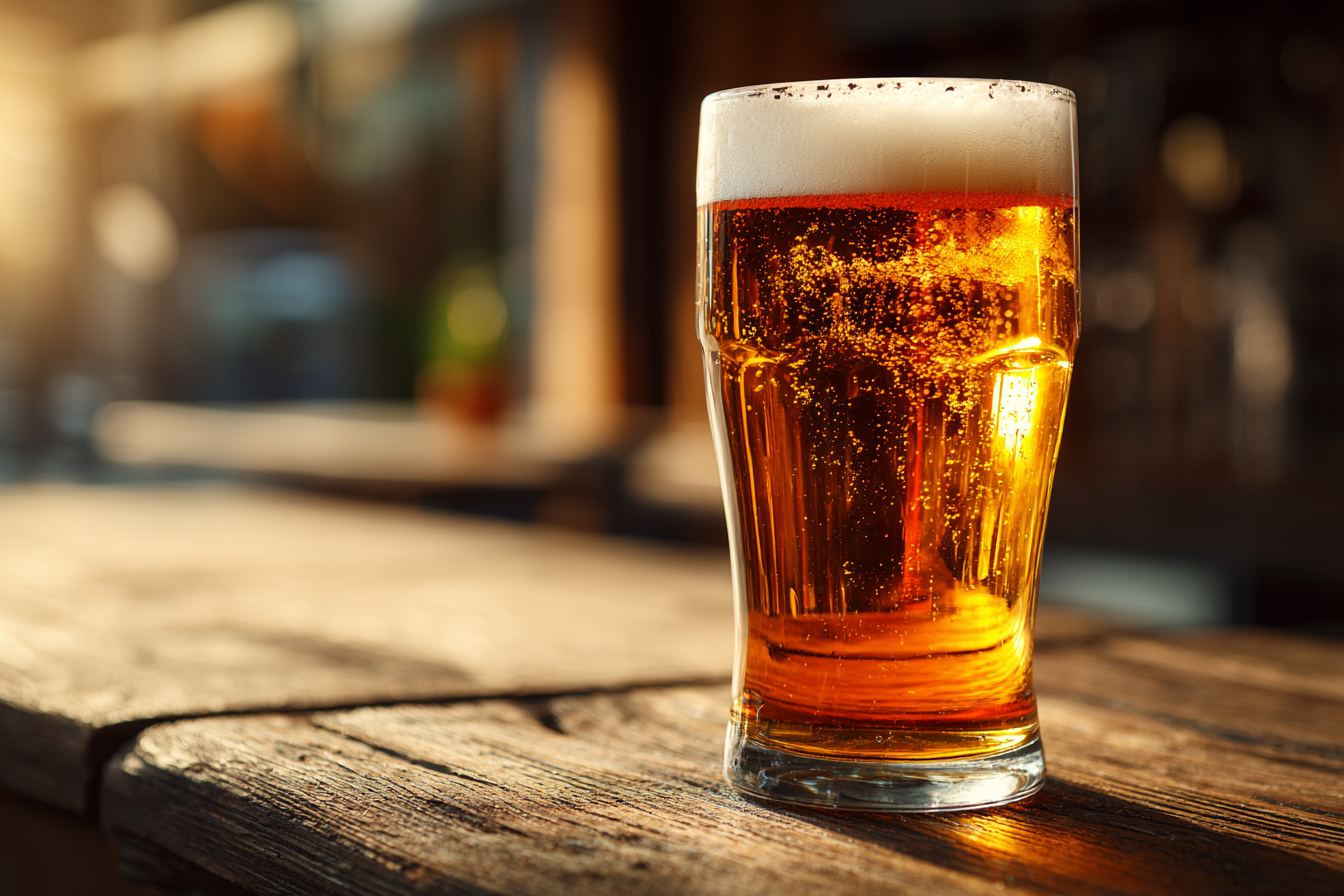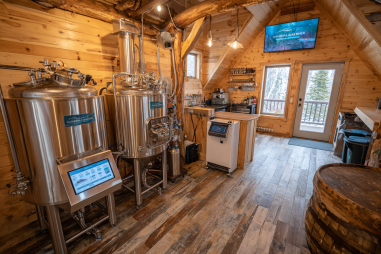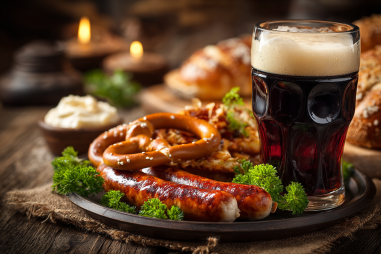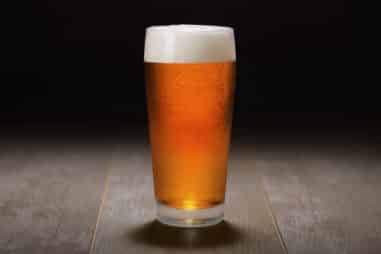Enjoying a pale lager might seem straightforward, but the way you serve this classic beer can significantly elevate the experience. Pale lagers are celebrated for their crisp, clean flavors and refreshing qualities, making them a favorite choice worldwide. However, to truly appreciate these qualities, attention to serving techniques is essential. From selecting the right glassware to mastering the perfect pour, and even choosing the ideal serving temperature, these factors combine to enhance the taste, aroma, and overall enjoyment of your beer.
Why Serving Matters for Pale Lager
Serving pale lager properly is more than just a ritual—it’s about unlocking the beer’s full potential. The distinct light body and subtle hop bitterness of a pale lager can be easily overshadowed by poor serving methods. If served too warm, the beer may taste flat and lose its refreshing bite. Conversely, if poured incorrectly, you might sacrifice the beer’s aroma or end up with a lackluster head, reducing the sensory appeal.
At its core, the way you serve pale lager influences the beer’s carbonation, aroma release, and temperature stability, all of which shape your drinking experience. Thoughtful serving elevates the simple pleasure of drinking this style, turning it into a refreshing, flavorful encounter every time.
Best Types of Glassware for Pale Lager
Choosing the right glassware for pale lager can enhance its color, aroma, and carbonation, plus hold a beautiful foamy head. The most popular and effective glasses include:
- Pilsner Glass: Tall, slender, and tapered, pilsner glasses accentuate the pale golden hues of the lager while promoting a lasting head and showcasing carbonation bubbles.
- Weizen Glass: Although originally designed for wheat beers, a weizen glass’s wide top and narrow bottom can also work nicely for pale lagers, helping concentrate aromas.
- Standard Beer Mug or Stein: It’s a bit heavier and more casual but offers durability and a classic feel. It can keep the beer colder longer but may not highlight the aroma as well.
- Shaker Glass: While common in bars, its straight sides aren’t ideal for aroma concentration. Still, it’s widely used and functional.
For the best experience, a pilsner glass is typically the winner, enhancing both visual appeal and aroma delivery.
Proper Pouring Techniques
How you pour your pale lager directly affects its carbonation and head retention. Here’s a step-by-step guide to pouring it just right:
- Start with a Clean Glass: Any residue or grease can kill the head and flatten your beer. Rinse the glass with cold water before pouring.
- Tilt the Glass at 45 Degrees: Pour the beer gently down the side of the glass to reduce initial foam.
- Straighten the Glass Slowly: As the glass fills, gradually tilt it upright and pour directly into the center to create a foamy head about one to two inches deep.
- Control the Pour Speed: Pour too fast, and you’ll get excessive foam; too slow, and the beer might lose its fizz.
This method preserves carbonation and creates an inviting foamy head, which traps aromas and lubricates the palate.
Ideal Serving Temperature Range
Temperature matters tremendously when serving pale lager. Serving it too cold numbs the flavors, while serving it too warm can make the beer taste flat or overly bitter.
The ideal temperature for pale lager typically falls between 38°F to 45°F (3°C to 7°C). At the lower end of this range, you’ll enjoy a refreshing, crisp sensation, ideal on hot days or for casual sipping. Closer to 45°F, more delicate malt and hop flavors become noticeable, allowing for a richer tasting experience.
For refrigerator storage, avoid freezing or serving directly from the freezer, as excessively cold temperatures can mask flavor and kill carbonation.
Tips for Carbonation and Head Retention
Carbonation is the heart of pale lager’s lively character. To maintain a perfectly effervescent beer with a thick, stable head, keep these tips in mind:
- Use Fresh Beer: Older beer loses carbonation over time.
- Keep Your Glass Clean: Residual oils and detergents can kill bubbles.
- Pour Properly: As mentioned above, the pouring technique directly affects carbonation retention.
- Avoid Excessive Agitation: Moving beer around too much before pouring releases CO2.
A good head not only looks beautiful but helps release the beer’s aroma while protecting it from oxidation.
Food Pairings to Consider
Pale lagers are extremely food-friendly, thanks to their light body and balanced bitterness. They pair well with a variety of dishes:
- Grilled Meats: Chicken, pork, and even light steak dishes complement the clean taste of pale lager.
- Seafood: Steamed mussels, fried fish, or shrimp make for refreshing combinations.
- Salads and Light Appetizers: Crisp greens, mild cheeses, and tapas offer subtle flavors that don’t overpower.
- Spicy Foods: Pale lagers help cool the palate, balancing the heat of dishes like spicy tacos or Asian fare.
Try experimenting with both simple and bold meals—pale lagers are versatile enough to handle them!
Storage and Freshness Advice
To get the most out of your pale lager, storing it properly is crucial. Keep these pointers in mind to maintain quality:
- Store in a Cool, Dark Place: Light and heat degrade flavor quickly.
- Keep Upright: Helps prevent oxidation and contamination from the cap.
- Buy Fresh: Pale lagers are best consumed within a few months of bottling.
- Avoid Temperature Fluctuations: Maintaining steady cool temperatures preserves carbonation and freshness.
If possible, consume your pale lager soon after purchase to enjoy its optimal crisp and refreshing character.
Maximizing Your Pale Lager Experience
Serving your pale lager thoughtfully is the key to unlocking an enhanced drinking experience. From selecting the right glass and maintaining the perfect temperature to mastering the pour and pairing with complementary foods, these tips bring out the best in every sip. Remember, the simple elegance and refreshing qualities of pale lager deserve attention and care to fully shine. So the next time you crack open a cold one, take a moment to serve it the right way—you’ll taste the difference and savor the moment even more.







